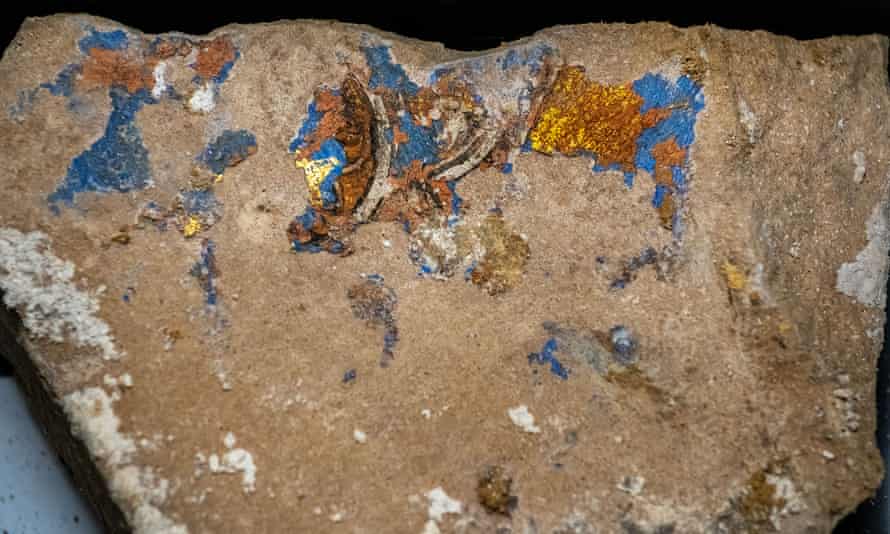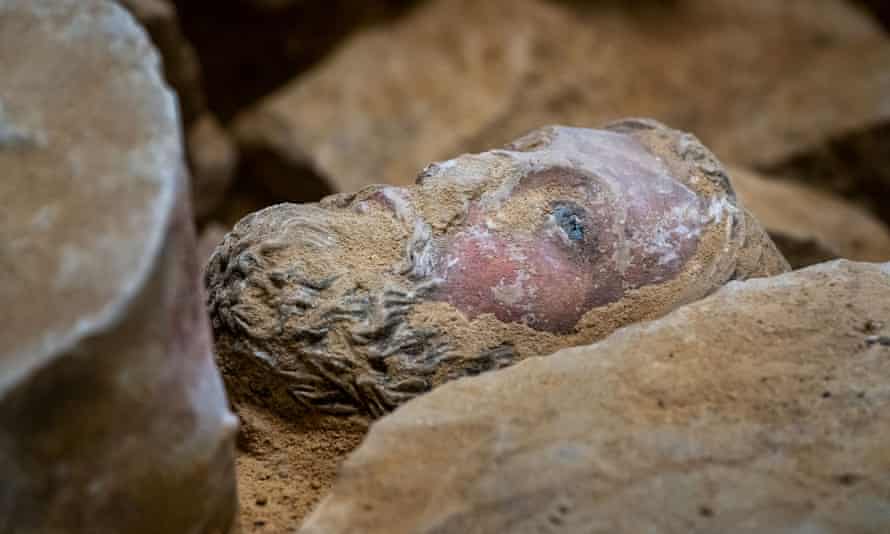An archaeological dig under Notre Dame Cathedral has uncovered an extraordinary treasure of statues, sculptures, tombs and pieces of an original rood screen dating back to the 13th century.
The find included several ancient tombs from the middle ages and a body-shaped lead sarcophagus buried at the heart of the fire-ravaged monument under the floor of the transept crossing.
French experts have described the discovery as “extraordinary and emotional”.
“We uncovered all these riches just 10-15cm under the floor slabs. It was completely unexpected. There were exceptional pieces documenting the history of the monument,” said Christophe Besnier, who headed the scientific team for the dig.
“It was an emotional moment. Suddenly we had several hundred pieces from small fragments to large blocks including sculpted hands, feet, faces, architectural decorations and plants. Some of the pieces were still coloured.”

The discovery was revealed by France’s national archaeological institute, Inrap, on Thursday. A team from the institute was called in to carry out a “preventive dig” under a section of the cathedral floor between February and April before a 100ft-high 600-tonne scaffold was built to reconstruct the monument’s spire.
Until now, only a few pieces of the original Notre Dame rood screen, an ornate partition between the chancel and nave that separated the clergy and choir from the congregation, have remained. Some of these are in the cathedral store rooms, while others are on show in the Louvre. In Catholic churches, most were removed during the Counter-Reformation in the 16th and 17th centuries. The rest of the Notre Dame rood appears to have been carefully interred under the cathedral floor during the building’s restoration by Eugène Viollet-le-Duc – who added the spire – in the mid-19th century.
One of the most extraordinary pieces was an intact sculpture of the head of a man, believed to be a representation of Jesus, carved from stone. Another block from the rood screen, believed to date from the 13th century, shows a Gothic-style monument.

The Inrap team was given a strict timeframe and only a specific area in which to carry out the excavation. After fire swept through the 850-year-old cathedral, one of Paris’s most symbolic and visited monuments, in April 2019, almost destroying the entire edifice, President Emmanuel Macron pledged to have it rebuilt and open for mass in five years.
Last September, Gen Jean-Louis Georgelin, appointed to oversee the restoration, said the safety of the cathedral structure had been established, meaning the restoration and reconstruction of the sections destroyed by fire could begin. He said the cathedral would be open for services and public visits as promised in 2024.
Besnier said they had identified several other slabs of the rood screen under the floor, but these were outside the specified limit of the dig. “We know they are there and won’t be damaged. Hopefully, we will be able to uncover them at a later date,” he said.
The excavation also unveiled a network of masonry heating pipes installed under the floor in the 19th century.
Experts believe the lead sarcophagus may contain the body of a high church official possibly dating back to the 14th century. A camera introduced into the coffin had revealed plant remains under the head of the deceased alongside hair and fragments of cloth, but there was no plate identifying the occupant.
Dominique Garcia, president of Inrap, said further examinations including DNA tests would be carried out, but added: “A sarcophagus containing a human body is not an archaeological object. These are human remains, and while examining the sarcophagus and analysing the body and other objects inside, we must do so with respect.”
He said no decision had been made as to where the body would be reburied once the tests had been completed. “It’s too early to say. It’s possible that it will be reburied somewhere in the cathedral.”